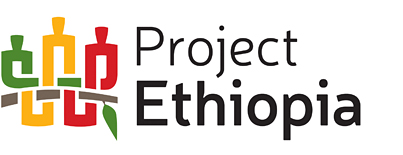Growing an Agriculture-driven Economy
By Zach Walters, Volunteer
For many in Ethiopia, daily life is deeply intertwined with and influenced by the success of their agriculture, and its importance to the nation’s development and security can’t be overstated. The industry contributes over 46% of the nation’s GDP, is the source of 60% of export earnings, and employs around 80% of the labor force1. This economic dominance has large implications for a nation’s stability, directly impacting regional levels of poverty and food insecurity.
Take, for example, a typical family in rural, western Amhara, where the Dangla woreda is found and where we focus our efforts. A family’s dinner, and thus their nutritional wellbeing, may come from their own potato, barley and cabbage plants, and their income may be dependent on their ability to grow coffee and raise cattle. The health of their cattle is, of course, dependent on the health of the fields around them, as is the case with their sheep and chickens. The state of Ethiopia’s economy, health and wellbeing is so reliant on the often-fickle success of agriculture that ensuring its stability through agriculture-led economic growth must be top of mind.
western Amhara, where the Dangla woreda is found and where we focus our efforts. A family’s dinner, and thus their nutritional wellbeing, may come from their own potato, barley and cabbage plants, and their income may be dependent on their ability to grow coffee and raise cattle. The health of their cattle is, of course, dependent on the health of the fields around them, as is the case with their sheep and chickens. The state of Ethiopia’s economy, health and wellbeing is so reliant on the often-fickle success of agriculture that ensuring its stability through agriculture-led economic growth must be top of mind.
So, what’s the best way to stimulate such growth? First, understand what fuels the region’s agriculture – for now, let’s focus on the wide range of regional crops:
- Cereals, including teff, barley, wheat and maize (which account for over 80% of cultivated land and total crop production)2
- Pulses: including soya beans, lentils, fenugreek and field peas
- Oil seeds: including safflower, linseed, sesame and rapeweed
- Vegetables: including Ethiopian cabbage, peppers, swiss chard and tomatoes
- Root crops: including potatoes, onions, beetroot, carrots and garlic
- Permanent crops: including coffee, chat, sugarcane and fruit crops
Next, identify the barriers to growth. A 2016 survey of farm households identified the primary limiting factors to crop production, specific to the Amhara region, as the following3:
Clearly, there is no shortage of obstacles for farmers in the region and thus no shortage of ways for us to get involved. So, how are we doing our part?
 One innovative example targets the two leading factors documented in the study: the high price of inputs and declining soil fertility. Project Ethiopia implements urine diverting dry toilets, which utilize improved designs to eliminate liquids in a composting chamber (thus reducing odor and facilitating the breakdown of solids), to extract diluted urine that can be used as a substitute for chemical urea fertilizer. Chemical urea fertilizer can be an expensive input for local farmers, not to mention its negative characteristics that destroy soil organisms and reduce the quality of plants’ nutritional values.
One innovative example targets the two leading factors documented in the study: the high price of inputs and declining soil fertility. Project Ethiopia implements urine diverting dry toilets, which utilize improved designs to eliminate liquids in a composting chamber (thus reducing odor and facilitating the breakdown of solids), to extract diluted urine that can be used as a substitute for chemical urea fertilizer. Chemical urea fertilizer can be an expensive input for local farmers, not to mention its negative characteristics that destroy soil organisms and reduce the quality of plants’ nutritional values.
This free, readily available fertilizer was put to the test against chemical urea fertilizer in 2008 for 25 farmers, and the results were inspiring: not only did all 25 farmers see improved weight in their crop yields, but the savings amounted to $125/year – an enormous break for farmers making less than $2 per day.
By mitigating barriers and increasing the productivity of smallholder agriculture through sustainable improvements, we can develop long-lasting solutions to promote economic growth, improve nutrition, and combat food insecurity. Read more about how we improve the economic opportunities for farmers and what you can do to get involved here.
1Deneke, T. T. (2016). Agricultural Research and Extension Linkages in the Amhara Region, Ethiopia. Technological and Institutional Innovations for Marginalized Smallholders in Agricultural Development, 113-124.
2Land forms, Climate and Economy. (n.d.). Retrieved from Ethiopian Demography and Health: http://www.ethiodemographyandhealth.org/Amhara.html
3Petros, T., Nachimuthu, K., Atinikut, H., & Gedefaw, M. (2017). Constraints and Challenges in Implementing Agricultural Extension Practices. . International Journal of Scientific and Research Publications, Volume 7, Issue 4.
